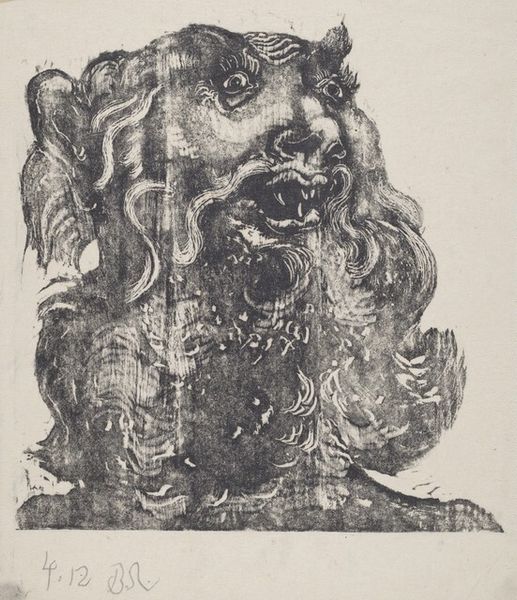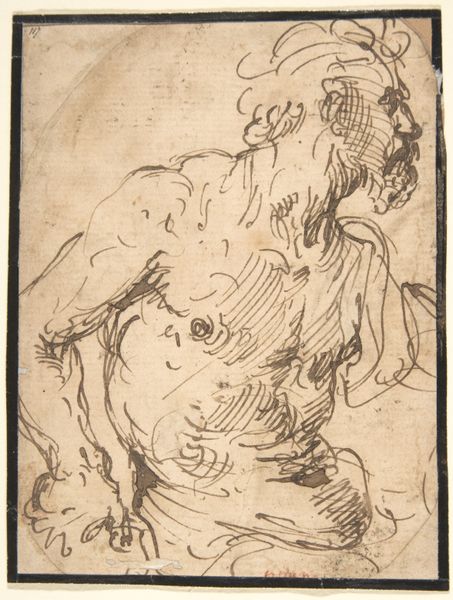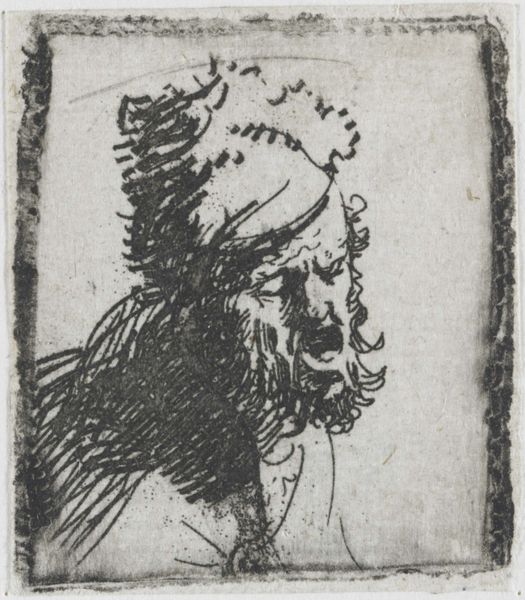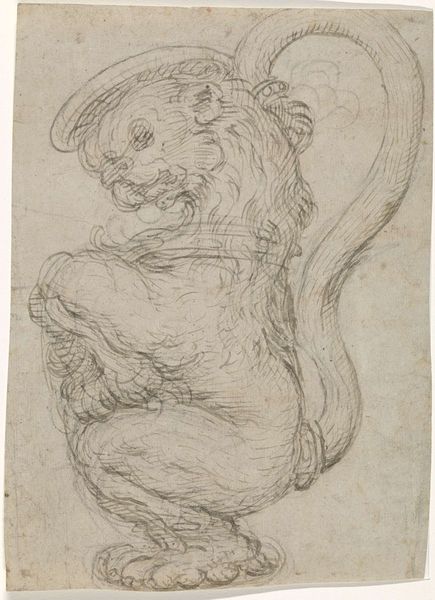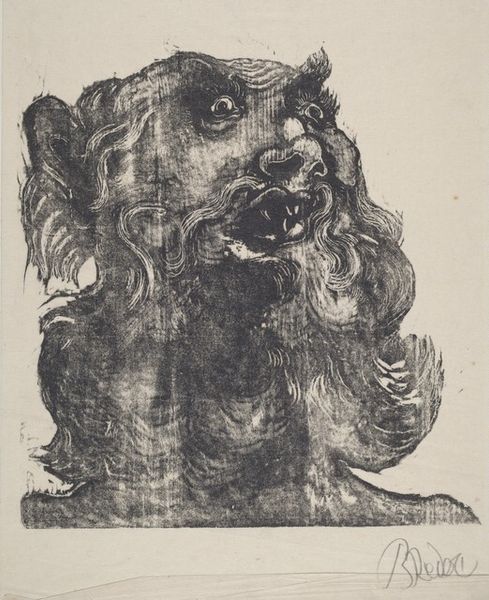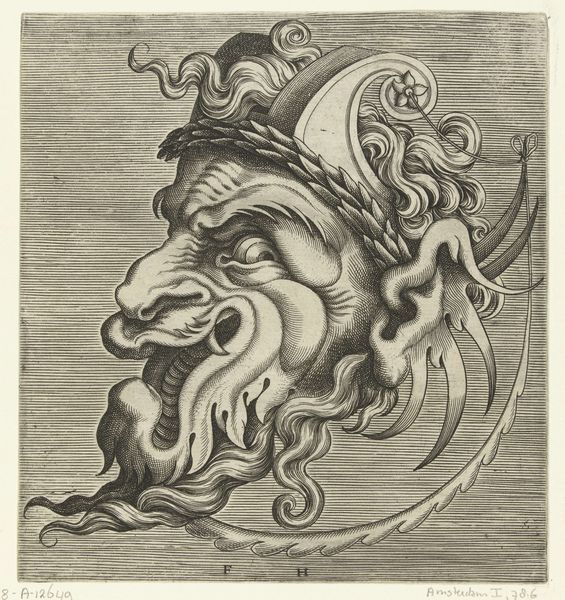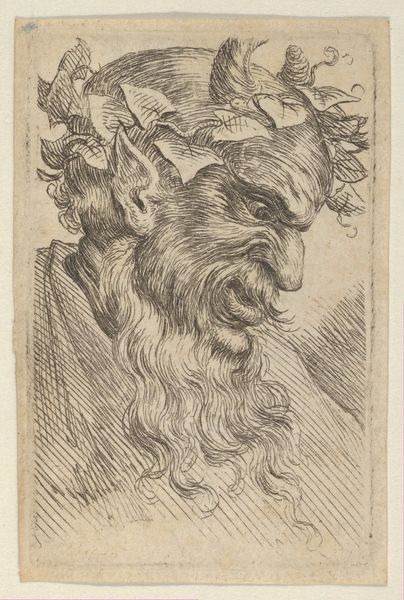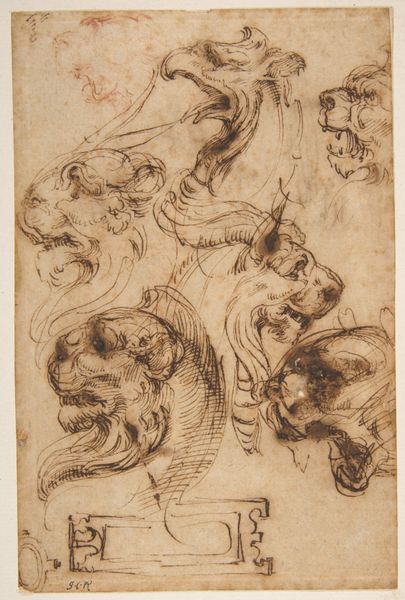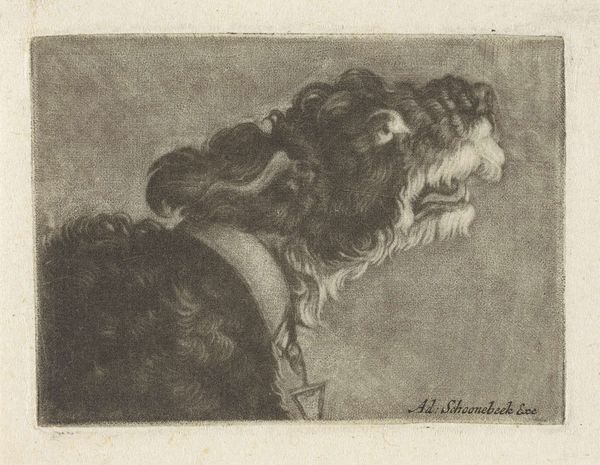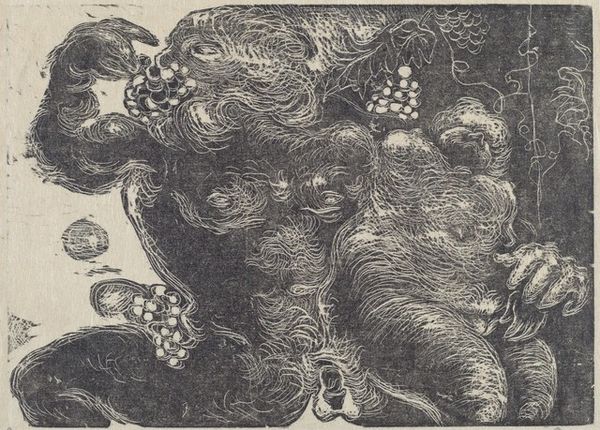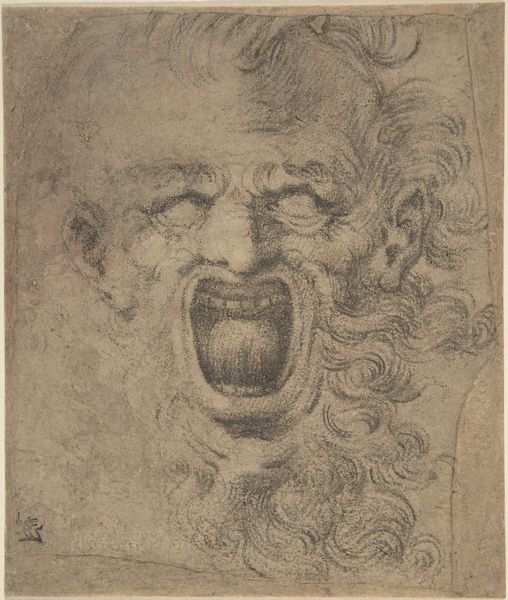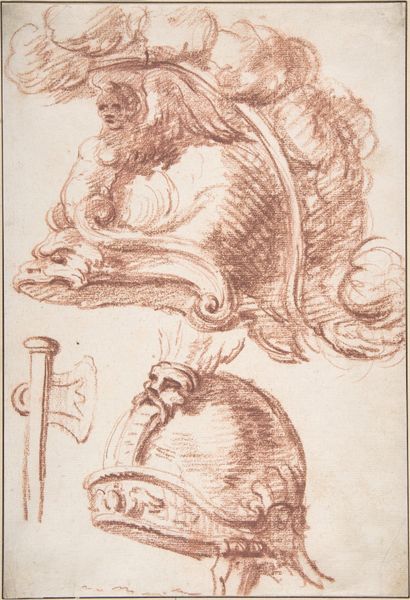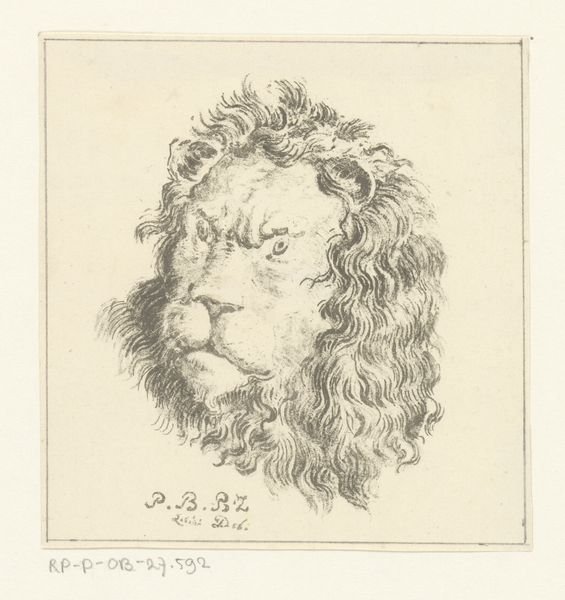
"And the beast was taken and with him the false prophet..." XIX.20
0:00
0:00
print, woodcut
# print
#
figuration
#
woodcut
Copyright: National Gallery of Art: CC0 1.0
Curator: Right, let's delve into this piece by Bernard Reder. It’s a woodcut print, titled "And the beast was taken and with him the false prophet...XIX.20". The inscription certainly grabs your attention. Editor: Oh, absolutely. It’s a wonderfully unsettling image, all tooth and stare. A sort of snarling beast, but almost… cartoonish? Its imposing nature is quite overwhelming, like something out of a half-remembered dream, or perhaps more aptly, a nightmare. Curator: Indeed, the beast evokes many associations. The woodcut, as a medium, lends itself particularly well to the subject matter; in many ways, printmaking democratizes horror. What effect might that have? Editor: That's a thought! It's fascinating to imagine it reaching wider audiences at that point, almost like an illustrated broadside denouncing a heretic. The print certainly taps into societal anxieties of the era. And who would be the beast in this situation, and why? Curator: Precisely, what makes it so evocative is its historical weight. The inscription tells us Reder's looking back to religious symbolism, where beasts often symbolize the worst aspects of human nature. I imagine he created it to be thought-provoking. Editor: It feels deeply personal, though, doesn't it? Beyond the historical reference, I sense a struggle with his own internal "beast," whatever that might be. Curator: That's what’s so compelling about his work. There are layers of meanings—the historical, the political, and, yes, that potent personal dimension. Editor: Looking at it now, it almost feels like Reder wanted this to stand as both an individual expression and an allegorical one. So many beasts; which one is the true subject, in his eyes? It’s left open. Curator: Leaving space for personal interpretation—it's a master stroke, making the work endlessly relevant. Editor: Ultimately, it's a chilling reminder of the darkness lurking beneath the surface. Beautifully, terrifyingly executed. Curator: I think you have captured the essence, the duality inherent to its historical roots with continued implications, and I believe, relevance for those seeking to decode societal meanings within art.
Comments
No comments
Be the first to comment and join the conversation on the ultimate creative platform.
